Why blueberry juice is amazing for you + tips on juicing and blending this berry
Blueberries (and blueberry juice, of course) are one of those fruits that doctors, nutritionists and other experts are starting to call “Superfruits.” It’s a fairly new term for low-calorie fruits that are packed with several key nutrients, including antioxidants, fiber, vitamins and minerals. Açaí berries, apples, blackberries, cherries, cranberries, grapes, kiwi, pomegranates, raspberries and tomatoes are a few of the other Superfruits.
Although all Superfruits are healthy, wholesome and deliciously nutritious, each one has its own individual nutritional profile.
For example, here’s the raw blueberry nutritional profile + benefits:
- Not many calories. There are only about 40 calories in each half-cup serving of fresh blueberries.
- Insignificant protein and fat. The vast majority of calories in a serving of blueberries come from carbohydrates.
- Vitamin A. Blueberries are a good source of vitamin A (an important antioxidant), but they’re an even better source of other nutrients.
- Vitamin C. For example, that little blueberry you’re holding in your hand is packed with vitamin C, a key antioxidant and a vitamin that’s essential for your overall health.
- Vitamin K. Essential for blood coagulation and clotting.
- Manganese. Another antioxidant that promotes a healthy body. It also helps raise your metabolism.
- Potassium. An electrolyte that’s essential not just for a healthy body, but for life itself. Its functions include maintaining the proper electrical charge in your intercellular fluid and helping to regulate the rhythm of your heart.
- Anthocyanins. Important for their role in staving off certain chronic diseases, many types of produce contain anthocyanins. These are another type of antioxidant and are present in especially high levels in blue, purple and red foods – like blueberries, for example (anthocyanins are also what gives blueberries their blue color). Research has shown that a diet which includes at least two servings of blueberries per week can significantly reduce your risk of developing Type II diabetes.
- Fiber. Raw blueberry is a good source of dietary fiber. Increasing your fiber intake adds bulk to your diet, helps you feel full faster, and aids your digestive system.
Other blueberry juice benefits
Blueberries have been studied a lot. In one study, done by the Journal of Neuroscience, shows the potential reversal of age-related impairments in memory and motor skills.
The most important benefit they offer is that they are a super rich source of antioxidants and phytonutrients. Antioxidants can do amazing things for our health and our looks. They help your body neutralize and remove free radicals from your bloodstream.
A lot of us enjoy the flavor of blueberries and we know they’re good for us. That’s why so many of us sprinkle a few on top of our morning breakfast cereal. It’s one of the reasons blueberry yogurt has become so popular. It’s also why so many kids as well as adults love blueberry pancakes and blueberry pie or cobbler (yes, I know those last two aren’t the best ways to get more blueberries into your diet, but they make good examples). Lots of us eat blueberries in one form or another at least every couple of weeks or so.
Unfortunately, that’s not nearly often enough.
If you’re like
most of us, the problem isn’t that you dislike the blueberry
– nope, the problem’s always been getting enough of them into
your diet.
What’s the answer to the dilemma? How can you get enough of these blueberries into your system to make a difference? After all, you probably don’t want to eat three quarts of berries every other day (I exaggerate, but you get the point).
It’s simple: make some refreshing blueberry juice.
If you juice
your blueberries instead of eating them whole, you’ll still get the benefit of
all their natural goodness. And blending them is a good idea, too.
If straight blueberry juice wouldn’t be your cup of tea, consider adding in other fruits, like apples, blackberries or cranberries. The blended juice you create will be healthy, wholesome, nutritious, refreshing and delicious. And you’ll be able to take advantage of the different nutritional profiles of those other fruits in addition to getting the benefits of the nutrients that are present in blueberries.
Whole blueberries are more difficult to digest than blueberry juice (with or without the juice from other berries and fruits). It will be easier for your body to absorb the nutrients in the juice than if they were still locked inside the whole berries. You’ll feel healthier and more energetic because your body will get the full benefit of this superfruit’s amazing benefits.
One bad thing about juicing blueberries + how to juice blueberries
Juicing most fruits and veggies is actually pretty easy. Blueberries are an exception and don’t juice easily because they’re so soft. They also don’t yield a lot of juice. Other than that, though, juicing blueberries is all good.
Juicing blueberries: The easiest way to juice blueberries is to alternate it with other firmer produce in your juicer. For example, if you are making a blueberry, apple, cranberry juice (highly recommended), add some apples to your juicer, then blueberries, then apple, then cranberries. By alternating the produce, it makes it easier on the juicer to extract the liquid.
Many juicers have soft and hard knobs, augers or screens that you can adjust for optimal juicing. Check out your juicer guide for instructions on how to do this, if you think yours has a special function. Many of the upscale juicers do.
Blueberries pair really well with other berries, apples, pears, carrots, pineapple, melon. They don't always mix well with veggies, so make your blueberry juice a fruit juice, and add some greens to balance it out and get more of a nutritional boost. Spinach and kale are the best greens to mix with blueberries, in my opinion.
Blending blueberries: Blending blueberries into a smoothie is amazing, too. For a quick drink, I like to pair them up with a banana, a few greens like spinach, a little almond milk and a date for added sweetness. They also blend well with other berries like strawberries or blackberries.
When they are in season, I like to wash and freeze them for use in winter months when they aren't available. They are also easy to find in the frozen organics section of most supermarkets. While you can't use frozen berries in your juicer, it's a great option for smoothies.
The humble
little blueberry contains a lot of amazing health benefits. Include them in your daily juicing or blending routine for an antioxidant boost.
Return from blueberry juice to juicing guide
YOUR JUICER-IN-CHIEF
|
Hi Juice Lover! I'm Vanessa, the Juicing Mixologist. I'll be guiding you to radical wellness and hotness you can chug. Learn more |
ULTRA POPULAR POSTS
My favorite must-have wellness gadgets
Why the Vitamix is the best blender
Find top juicers that fit your style
How to make green drinks that taste good
The difference between juicing and blending
The need to know steps on how to start juicing
|
Took my BP today. It was lower than its ever been. It's that juicing! Love it! I also don't feel like I need my daily coffee pick me up! Feeling great. Nancy, Las Vegas |
|
This is the best site ever. Seth, Vancouver, Canada |
|
I've recently lost 10 pounds by using the weekend weight loss plan. Jan G, New Mexico |
|
I have no questions. Jeff, California |
|
ALL of the recipes have been winners. We honestly look forward to each days new concoction. Thanks! Sue, Denver |
|
I enjoy your emails; Alex, Chicago |
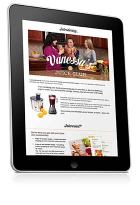 The Juice Club
The Juice Club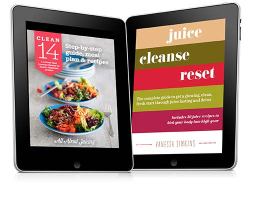 Live Group Supported Cleanses
Live Group Supported Cleanses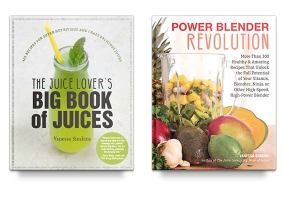 Vanessa's Paperback Books
Vanessa's Paperback Books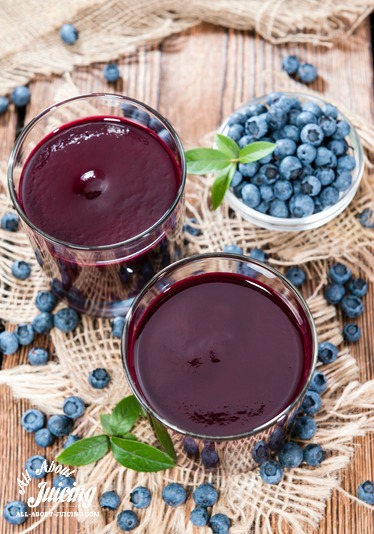






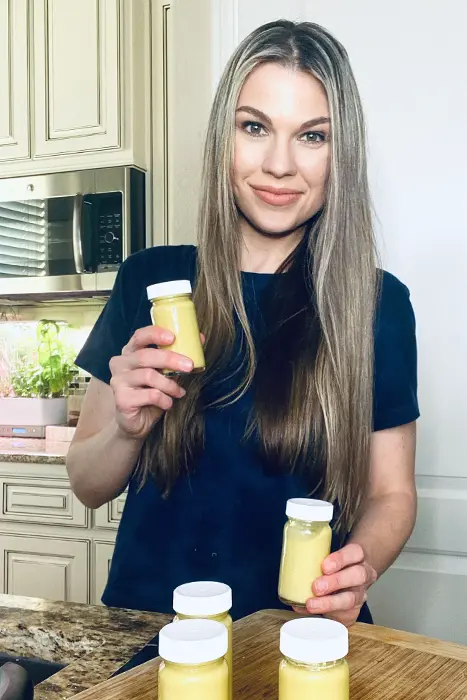


Lovin' this juicy info? Leave a comment in the box below